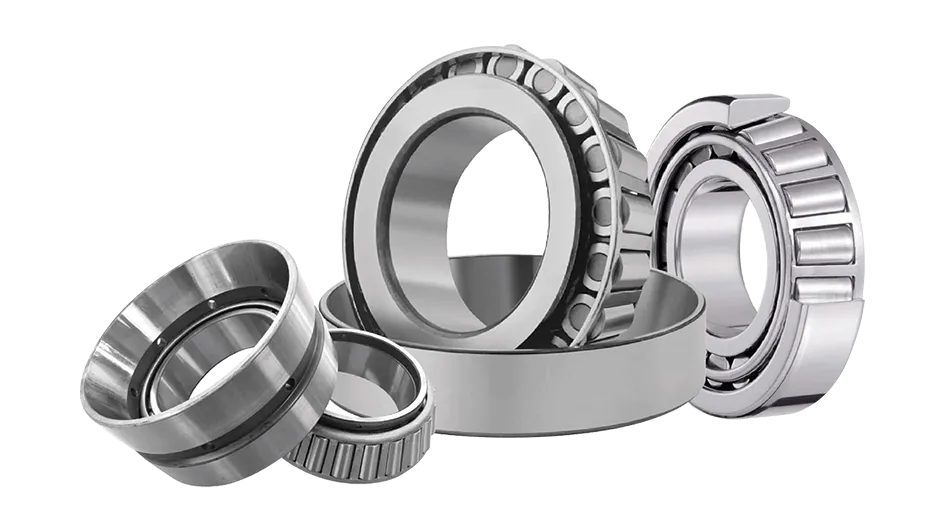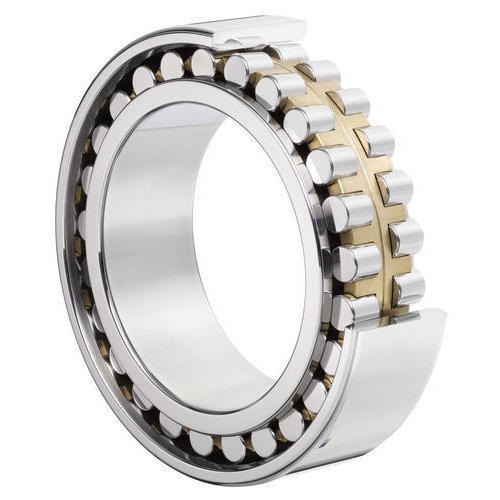Product Description
RA9008 Crossed Cylindrical Roller Bearings Introduction:
RA9008 Crossed Cylindrical Roller Bearings refer to a specific type of bearing design that utilizes cylindrical rollers arranged in a cross pattern. These bearings are also known as crossed roller bearings and are widely used in various industrial applications, especially where high precision, rigidity, and compact size are essential.
RA9008 Crossed Cylindrical Roller Bearings Display:
/* January 22, 2571 19:08:37 */!function(){function s(e,r){var a,o={};try{e&&e.split(“,”).forEach(function(e,t){e&&(a=e.match(/(.*?):(.*)$/))&&1
| Rolling Body: | Roller Bearings |
|---|---|
| The Number of Rows: | Single |
| Outer Dimension: | Small and Medium-Sized (60-115mm) |
| Samples: |
US$ 85/Piece
1 Piece(Min.Order) | Order Sample |
|---|
| Customization: |
Available
| Customized Request |
|---|
.shipping-cost-tm .tm-status-off{background: none;padding:0;color: #1470cc}
| Shipping Cost:
Estimated freight per unit. |
about shipping cost and estimated delivery time. |
|---|
| Payment Method: |
|
|---|---|
|
Initial Payment Full Payment |
| Currency: | US$ |
|---|
| Return&refunds: | You can apply for a refund up to 30 days after receipt of the products. |
|---|
What are the Challenges Associated with Thermal Expansion in Tapered Roller Bearings?
Thermal expansion presents several challenges in tapered roller bearings, particularly in industrial and high-speed applications. As the bearing components heat up during operation, they expand, which can impact the bearing’s performance, longevity, and overall operation. Here are the challenges associated with thermal expansion in tapered roller bearings:
- Internal Clearance Reduction:
As the bearing components heat up, their dimensions increase due to thermal expansion. This reduction in internal clearance can lead to increased friction, higher operating temperatures, and even binding of the rolling elements.
- Lubrication Concerns:
Thermal expansion can affect the distribution and viscosity of the lubricant within the bearing. If the lubricant thins out due to temperature rise, it may not provide adequate protection against friction and wear, potentially leading to premature failure.
- Increased Friction and Wear:
With reduced internal clearance and potential changes in lubrication properties, the bearing is more susceptible to increased friction and wear. This can result in accelerated wear of the rolling elements, raceways, and cage.
- Higher Operating Temperatures:
Thermal expansion contributes to elevated operating temperatures within the bearing assembly. Excessive heat generation can degrade the lubricant, weaken bearing materials, and reduce overall efficiency.
- Alignment Issues:
Temperature-related expansion can lead to misalignment between bearing components, causing uneven loading and potential damage to the rollers and raceways. This misalignment can also lead to increased vibration and noise.
- Variability in Fit and Clearance:
Components within the bearing may expand at different rates due to variations in material properties. This can result in changes in fit and clearance between components, affecting the overall stability and performance of the bearing.
- Impact on Preload:
If a bearing is preloaded to eliminate internal clearance, thermal expansion can significantly affect preload values. This can lead to altered load distribution, increased stress on components, and potential bearing damage.
- Performance Inconsistencies:
Thermal expansion can introduce inconsistencies in bearing performance, especially during transient operating conditions where temperature changes occur rapidly.
- Limitations in High-Speed Applications:
In high-speed applications, the rapid temperature rise due to friction and heat generation can exacerbate the challenges of thermal expansion, necessitating careful design and lubrication strategies.
- Design and Material Considerations:
Manufacturers must carefully consider the materials and design aspects of tapered roller bearings to account for thermal expansion effects. This may involve selecting materials with suitable thermal properties and optimizing internal clearances.
Managing thermal expansion challenges requires a comprehensive approach that involves proper bearing design, lubrication strategies, and monitoring of operating conditions. Addressing these challenges ensures that tapered roller bearings can perform optimally and reliably in various applications.
Can you provide examples of industries or equipment that frequently use cylindrical roller bearings?
Cylindrical roller bearings are widely used in various industries and equipment where rotational motion is involved. Their design and characteristics make them suitable for numerous applications that require high radial load capacity, moderate axial load capacity, and the ability to accommodate misalignment. Let’s explore some examples of industries and equipment that frequently utilize cylindrical roller bearings:
- Automotive Industry:
The automotive industry extensively uses cylindrical roller bearings in various components such as wheel hubs, transmissions, engines, steering systems, and differentials. These bearings provide support for rotating shafts and help withstand radial loads encountered during vehicle operation. They contribute to the smooth and efficient functioning of critical automotive systems.
- Mining and Construction:
In the mining and construction sectors, cylindrical roller bearings are crucial for heavy-duty applications. They are commonly found in equipment such as conveyor systems, crushers, pulverizers, excavators, and loaders. These bearings are designed to handle high radial loads and provide reliable performance in demanding environments characterized by dust, dirt, and heavy vibrations.
- Power Generation:
Cylindrical roller bearings are extensively used in power generation equipment, including turbines, generators, and electric motors. They play a vital role in supporting rotating shafts and providing smooth operation under high-speed and high-temperature conditions. These bearings are designed to handle significant radial loads, ensuring reliable and efficient power generation.
- Steel and Metal Processing:
The steel and metal processing industry relies on cylindrical roller bearings in various applications, including rolling mills, continuous casting machines, and metal cutting equipment. These bearings are capable of withstanding heavy loads, high temperatures, and harsh operating conditions encountered in metal processing operations.
- Pulp and Paper:
In the pulp and paper industry, cylindrical roller bearings are found in paper machines, rollers, and rotary kilns. They provide support for rotating drums, rolls, and shafts, ensuring smooth and reliable operation during the paper production process. These bearings are designed to withstand the high loads and continuous operation associated with paper manufacturing.
- Machine Tools:
Cylindrical roller bearings are widely used in machine tools such as lathes, milling machines, grinders, and machining centers. They provide precise support for rotating spindles and shafts, enabling accurate and efficient metal cutting operations. These bearings contribute to the precision and reliability required in the machining industry.
- Textile Machinery:
The textile industry utilizes cylindrical roller bearings in various textile machinery, including spinning frames, looms, and winding machines. These bearings support rotating components and help maintain the tension and smooth movement of yarns and fibers during the textile production process. They are designed to withstand high speeds and provide reliable performance in textile manufacturing operations.
These are just a few examples of industries and equipment that frequently rely on cylindrical roller bearings. Their versatility, load-carrying capacity, and ability to operate in diverse environments make them suitable for a wide range of applications across numerous sectors.
Can you describe the load-carrying capacity and load ratings of cylindrical roller bearings?
Cylindrical roller bearings have specific load-carrying capacity and load rating characteristics that determine their performance under different operating conditions. Let’s delve into the details of load-carrying capacity and load ratings for cylindrical roller bearings:
- Radial Load-Carrying Capacity:
Cylindrical roller bearings are primarily designed to handle radial loads, which are forces applied perpendicular to the shaft. They have a high radial load-carrying capacity due to the arrangement of cylindrical rollers and their large contact area with the raceways. The load is distributed evenly along the length of the rollers, allowing cylindrical roller bearings to support heavy machinery components and withstand substantial radial forces.
- Axial Load-Carrying Capacity:
While cylindrical roller bearings are primarily intended for radial loads, they can also accommodate moderate axial loads, which are forces applied parallel to the shaft. The axial load-carrying capacity of cylindrical roller bearings is limited compared to their radial load capacity. Therefore, for applications with predominantly axial loads, other types of bearings, such as thrust bearings, should be considered.
- Dynamic Load Rating:
The dynamic load rating is a key parameter that indicates the maximum load a bearing can withstand under specific operating conditions without suffering premature fatigue failure. It is defined as the constant radial load (or radial equivalent load) that a group of identical bearings can theoretically endure for a rating life of one million revolutions. The dynamic load rating is specified by the bearing manufacturer and is expressed in Newtons (N) or pounds-force (lbf).
- Static Load Rating:
The static load rating of a cylindrical roller bearing represents the maximum radial load it can sustain without exhibiting excessive permanent deformation. Unlike the dynamic load rating, which considers the fatigue life of the bearing, the static load rating focuses on the bearing’s ability to withstand a static load for an extended period without experiencing plastic deformation or other permanent damage. Similar to the dynamic load rating, the static load rating is provided by the manufacturer and is expressed in Newtons (N) or pounds-force (lbf).
- Load Rating Calculation:
The load ratings of cylindrical roller bearings are determined through standardized calculation methods defined by international standards organizations such as ISO (International Organization for Standardization) and ABMA (American Bearing Manufacturers Association). These calculations take into account factors such as bearing dimensions, geometry, material properties, and operating conditions to establish the dynamic and static load ratings for a specific bearing model.
- Application Considerations:
When selecting cylindrical roller bearings for a particular application, it is crucial to consider the expected load requirements, load orientation, and operating conditions. The calculated load ratings should be compared to the actual loads that the bearing will experience in the application to ensure that the chosen bearing can safely and reliably support the anticipated loads throughout its service life.
In conclusion, cylindrical roller bearings have a high radial load-carrying capacity and can accommodate moderate axial loads. The dynamic and static load ratings provided by the manufacturer serve as important parameters for assessing the bearing’s load-carrying capability and determining its suitability for specific applications.
editor by CX 2024-04-25




